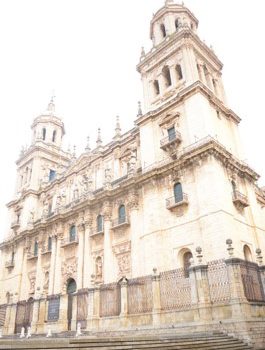
Jaén
Jaén is the capital of the inner paradise. Located at the foot of the Santa Catalina hill, where the castle of the same name stands, the city is home to the most dazzling Renaissance Cathedral in Spain, the work of the architect Andrés de Vandelvira.
Popular streets and squares lead to the best-preserved Arab Baths in the country. The neighborhoods that stretch around it are the heritage of Arab, Jewish and Christian cultures.
An ancient city where you can follow in the footsteps of many of our illustrious authors: San Juan de la Cruz, García Lorca, Miguel Hernández and Juan Eslava Galán.
The capital of the inner paradise has a special mark on the life and work of these writers, as can be seen in the itineraries defined in the city. Convents, palatial houses, streets, fountains, churches, the Cathedral, even Jaén´s popular legend, the “lizard of the Malena” … Endless spaces to create a unique itinerary to discover Jaén in a different way by hand of these magnificent authors.
Tourism Portal of the Provincial Council of Jaén
https://www.dipujaen.es/conoce-diputacion/areas-organismos-empresas/ieg/
http://www.jaenparaisointerior.es/
Tourism Portal of the Jaén City Council
Web Portal of the Institute of Studies of Jaén
https://www.dipujaen.es/conoce-diputacion/areas-organismos-empresas/ieg/
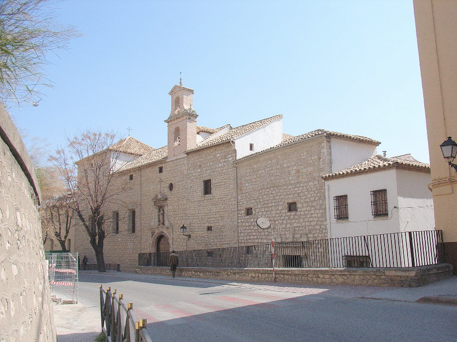
Monastery of Santa Teresa de Jesús
The Baroque-style Santa Teresa de Jesús Monastery was founded on a house-palace in 1615 (the construction of the temple began in 1673), after several unsuccessful attempts to found it in the capital of Granada. It is a very austere Carmelite-style temple with a very simple composition, which actually gives it great beauty. In addition to the architecture itself, the monastery holds important treasures inside, altarpieces, sculptures or paintings, and, most importantly, an authentic bibliographic treasure: the manuscript of the Spiritual Canticle of Saint John of the Cross, also called the Codex of Jaén. The Codex of Jaén is not a…

Tablas bridge
Puente Tablas is an inhabited settlement belonging to Jaén, is located a few kilometers from the urban center of the capital of Jaen. It is famous for having an Iberian oppidum (fortified city), which has a great patrimonial value and where you can learn how the Iberians of the upper Guadalquivir lived, contemplate one of the largest Iberian fortifications, with more than 300 meters of wall reaching more than 5 meters high, still preserved. Juan Eslava Galán does not miss the opportunity to introduce Iberian culture every time he has the opportunity. For this reason, Juan de Olid, the main…

Bernabé Soriano street
This emblematic street, a reflection of the history of the city of Jaén, is popularly known as “La Carrera”(the Race) because this was where “horse races” were held in the times of Constable Iranzo, as Eslava Galán mentions in his Planeta Award “In search of the unicorn ”. (…) And the Constable raised a handkerchief and signaled and the trumpets sounded and the horsemen let themselves come one against the other, drawing sparks from the stones in a very fierce gallop, their lances drawn, the stronger they were able to bring their horses (…). In search of the unicorn. Chapter…
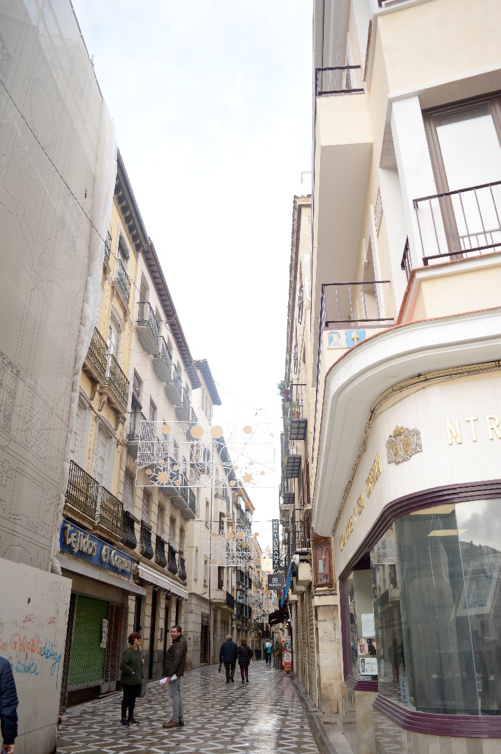
Master Street
Calle Maestra is one of the main arteries of the historic center of Jaén, where numerous shops and the Jaén Tourist Office are located, where you can request more information. The fact of being pedestrian, greatly facilitates traffic and commercial activity in the area. (…) we turned to the right and took the Rúa Maestra and the people had gone to the windows and climbed to the roofs and rooftops and everyone was waving with handkerchiefs and cheering, and it seemed that there was a party and raucous for a great event ( …) In search of the unicorn. Chapter…
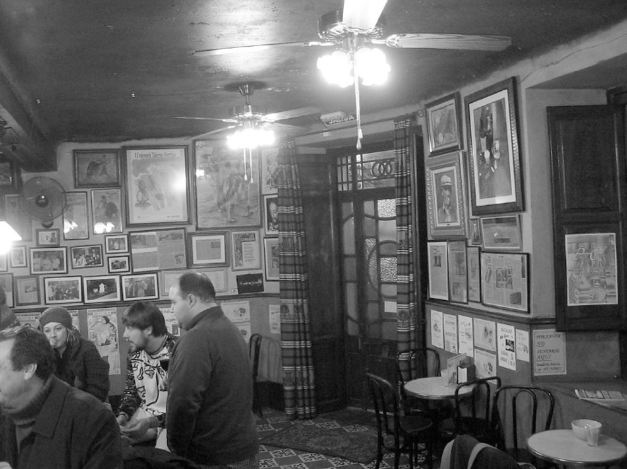
The tavern «El Gorrión»
Juan Eslava Galán makes a nod in his works to one of the oldest taverns in the city of Jaén, was founded in 1888. This tavern also shows a “mummified ham” in the establishment that has a legend about its origin, with two versions. The first and most credible is that José María López Cruz, the first tavern keeper of the dynasty, while hanging several ham pieces in the tavern’s cellar, learned of the end of the First World War and to celebrate it he decided to “forgive” the ham save it from being consumed. The second and more romantic…

San Francisco Square
One of the most emblematic squares of the capital is that of San Francisco, which owes its name to the old monastery built in the middle of the 14th century under the dedication of San Francisco de Asís. The Convent was demolished at the end of the 19th century and on the land it occupied now the Plaza de San Francisco and the Palace of the Provincial Council, project of the architect Jorge Porrúa, stands. A sculpture of the Magdalena fringed with cryptic inscriptions currently presides over the courtyard of the Diputación, in the exact place where the Templar chapel…
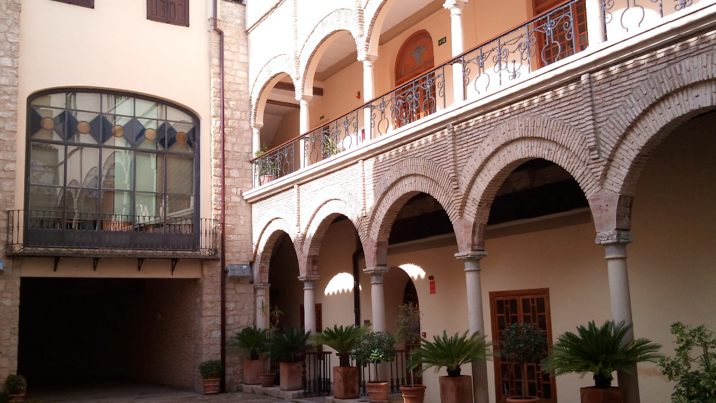
Palace of Condestable Iranzo
Once they arrive in Jaén, the entourage that has to look for and find the unicorn stays at the Palace of the Constable of Castilla, the very illustrious Mr. Miguel Lucas de Iranzo, Mr. Juan de Olid, our peculiar hero. The old Palace, today the seat of the Municipal Board of Culture and Tourism of the city of Jaén, was built in the 15th century, and the Mudejar room is still preserved, the interior of which is covered with a magnificent Mudejar paneling, a unique example of this art throughout city and arcades gallery in the late Gothic courtyard. (…)…
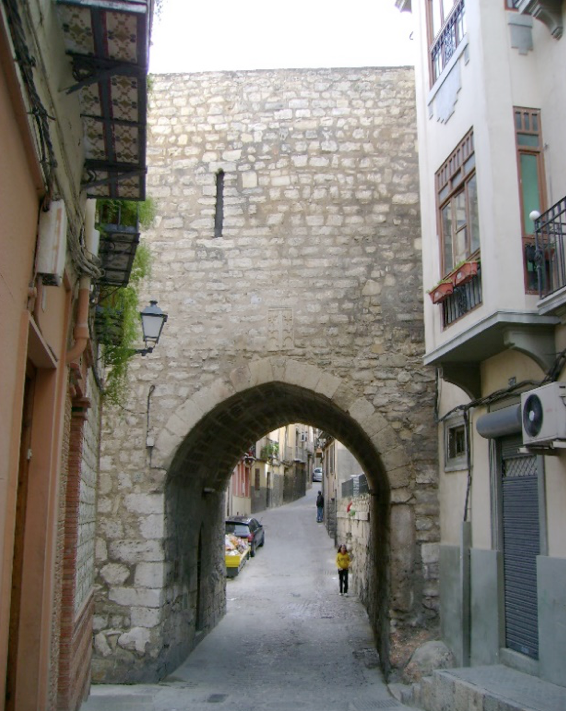
Arch of San Lorenzo
The arch of San Lorenzo is the only remaining vestige of the old church that gives it its name. It dates from the 13th century. Listed as a National Monument since 1877. Located at the confluence of Almendros Aguilar and Madre de Dios streets, A defensive bastion was used for its construction, which was used as a sacristy, whose apse is what remains today as the San Lorenzo arch. The interior is divided into two floors. On the ground floor is the old church chapel, a true treasure of Jaen´s Mudejar art that evokes the Alhambra in Granada. On the…
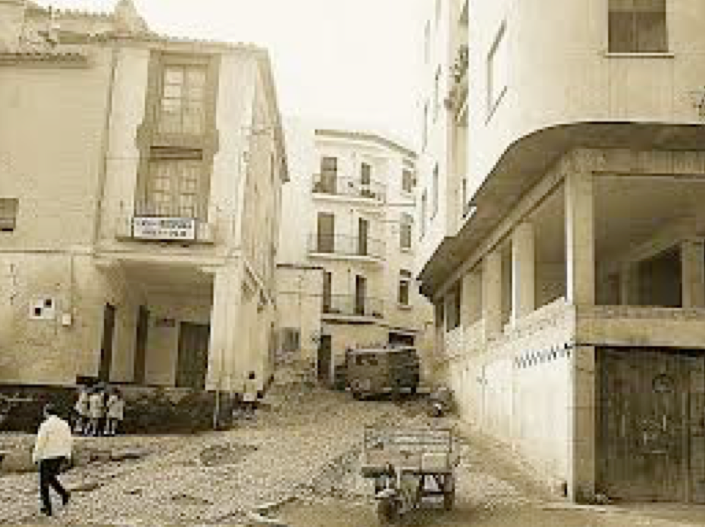
Arrabalejo Tavern
Juan Eslava Galán pays homage in his work to the Arrabalejo tavern, one of the most rooted establishments in the city. The tavern has two floors. On the ground floor there is a restaurant and the upper floor houses an authentic photographic museum of old images. (…) In which two days there was nothing remarkable to say, except that two crossbowmen drunkenly rioted the tavern that they call Arrabalejo, the place where the city’s scoundrel gathers, and one of them received a cut of twelve stitches. (…) In search of the unicorn. Chapter IV.

Arab baths cultural center
The Arab Baths Cultural Center. The Villardompardo Palace is located in the Palace of the First Count of Villardompardo and Viceroy of Peru, Sir Fernando de Torres y Portugal, a Renaissance building from the 16th century. Built in the 11th century, the Arab Baths of Jaén are located in the basements of the Palace and their extension makes them probably the largest visitable baths in Spain. At the end of the 16th century the Count of Villardompardo built his Palace on the Baths, pwhile art of them kept hidden between the foundations and basements, remaining in this way during the…
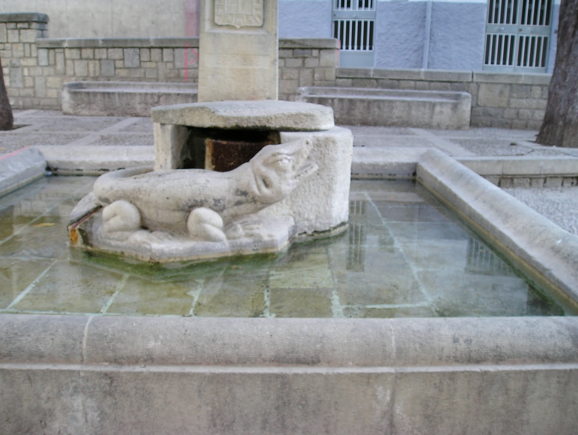
The lizard of La Malena
The Lizard of La Malena (decay for Magdalena, Jaén’s oldest neighborhood and where its mythical lair was located), is the most famous legend of the capital, possibly the most outstanding creation of popular literature. The influence of this legend is such that the lizard has become a symbol of the city, being present in its urban space (statue of the lizard), concerts (Lagarto Rock), on the coat of arms of the Cabildo of the Cathedral, etc. So much so that the legend of the Lagarto de la Malena is one of the ten Treasures of the Intangible Cultural Heritage of…
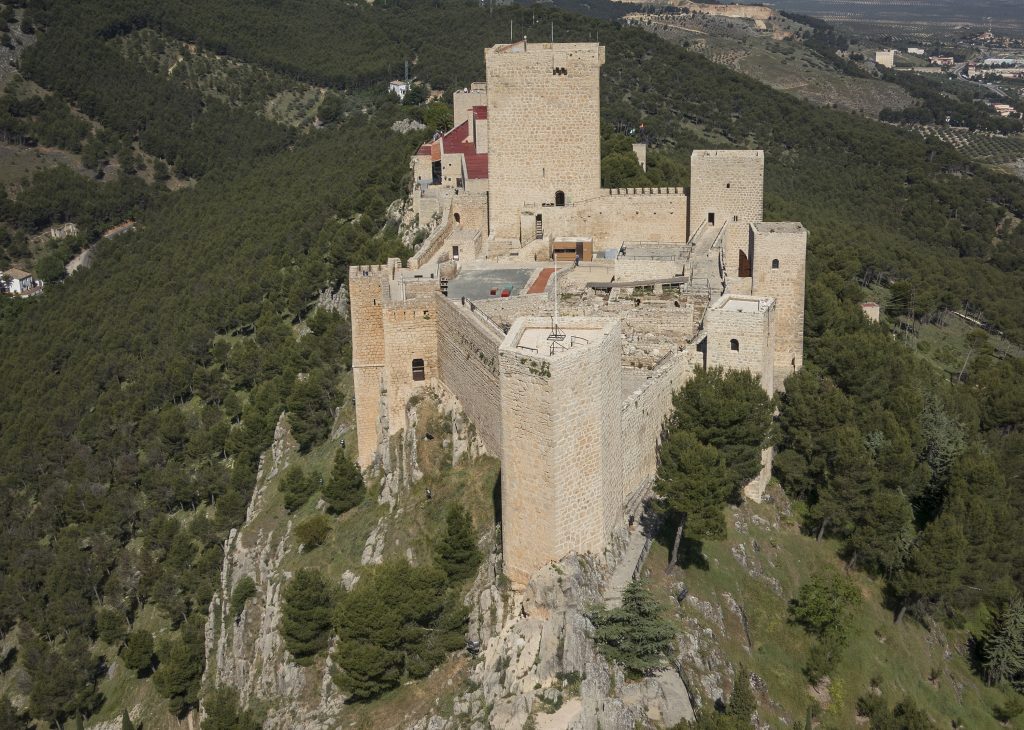
Castle of Santa Catalina
The castle of Santa Catalina, one of the emblems of Jaén, crowns the hill that gives it its name, from where you can see a unique and spectacular landscape of the city and its mountains. It also houses an Interpretation Center which offers a tour of its history. The origin of the fortress is an old caliphate fortress from the 9th century, the Christian castle that has survived to this day was built in the 13th century. After the conquest of the city by Fernando III, its defenses are fortified and turned intoǨ-ñ. an important bulwark against the Nasrid Kingdom…

Place of Santa María (Cathedral de Jaén)
En la plaza de Santa María se ubica la Catedral de Jaén, el gran monumento de la ciudad, por lo que no escapa al interés de nuestros escritores. Por ejemplo, Juan Eslava Galán utiliza estos espacios para contextualizar lugares y acciones en sus obras; Federico García Lorca los reseña en sus postales cuando viaja por Jaén y Miguel Hernández la refleja en sus artículos sobre el bombardeo de Jaén Vínculo con Federico García Lorca Vínculo con Miguel Hernández. Vinculo con Juan Eslava Galán
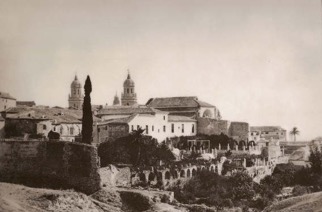
Aqueduct of Carmen and path of the Orchards
On November 2, 1925, García Lorca dated a postcard with the image of the Aqueduct of Carmen and the Senda de los Huertos, very close to the address he uses as his residence, on Carrera de Jesús Street. In this postcard, addressed to his friend Melchor Fernández Almagro, who lived in Madrid, he recommends his visit to Jaén: “I’m sure you would find the character of this landscape magnificent.” Senda de los Huertos was one of the city’s scenic heritages until it was urbanized, in the years sixties of the 20th century. This area, steeped in history (Roman and Muslim…
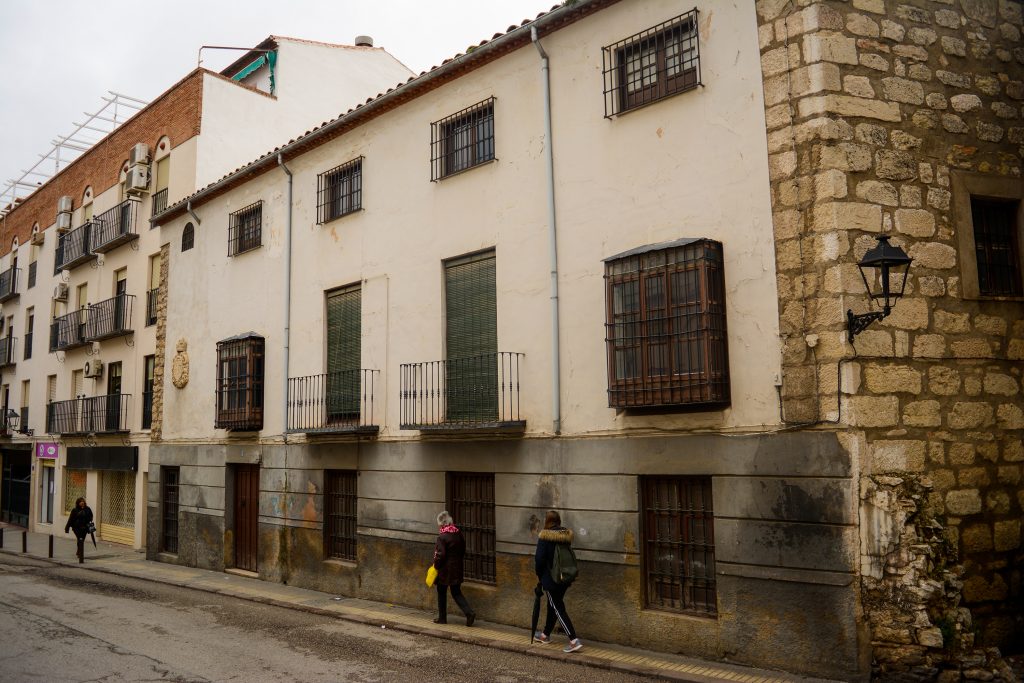
Carrera de Jesús street house
On his trip to Jaén, Federico García Lorca stayed at the house of Don Manuel Montero Sola on Carrera de Jesús Street. The building consists of three floors with a lateral façade of exposed stone, while on the main façade there are two central balconies flanked by two viewpoints with bars and a noble coat of arms on one side. The Aqueduct of Carmen was in its back gardens.
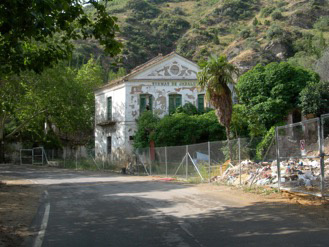
Jabalcuz hot springs
Although quite far from the proposed Hernandian urban itinerary, one of the places that are linked to Miguel Hernández and that deserve a visit are the Jabalcuz Hot Springs. The hot springs were owned by the same owners as the building of his home and the Commissariat, so he may have known them for this reason. He used to walk or walk up there together with his wife, and sometimes bathed in a pool in the farm. Josefina Manresa remembers these events in the book of her Memories: Memories of the widow of Miguel Hernández: (…) We would go out…
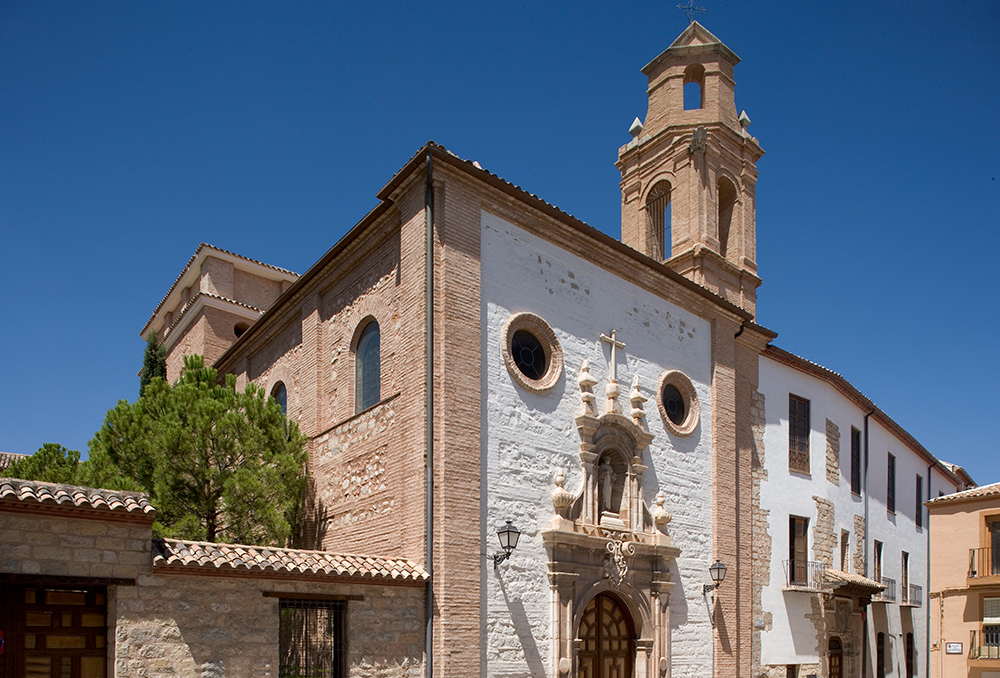
Institute of Jaén Studies
Institute of Jaén Studies (Instituto de Estudios Giennenses – IEG) is an Autonomous Body of the Diputación de Jaén whose main function is the promotion and study of culture, science and art in the province of Jaén. The IEG is introduced in this itinerary due to its work of documentation and custody of the Miguel Hernández Legacy. A legacy made up of 5,600 records and more than 26,000 images (collections of manuscripts, photographs, brochures, scores, historical press, sound recordings, etc.), with the intention of being a fundamental tool to promote studies and research on the figure and the work of…
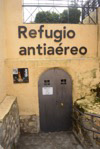
Air-raid shelter
After the bombing of the city of Jaén by Francoist troops on April 1, 1937, which caused 159 fatalities and considerable material damage, measures were taken to prevent and minimize future air attacks: sound warnings, night-time darkness by turning off lights and the construction of several public underground shelters scattered throughout the city. Shelters that, at the end of the war, were abandoned and even forgotten, with significant physical deterioration. One of them, located in the Plaza de Santiago, was built using the old crypts of the Church of Santiago. A shelter that had a capacity to accommodate up to…
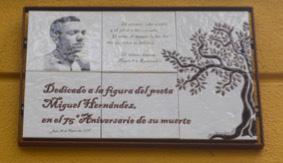
The Orange Trees Square
Continuing in a straight line along Calle Maestra, we turn and climb slightly up Calle Colegio until we reach Plaza de los Naranjos, a beautiful corner brimming with citrus fruits that give it its name and the only space where you can enjoy a beautiful ceramic plate dedicated to Miguel Hernández and complemented with a nice and brief extract from the poem “The last corner”: (…) The orange trees tastes like life and the olive trees tastes like time. And in between their grieving My passions collide.(…)
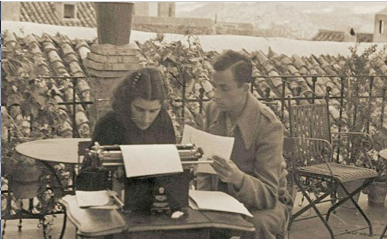
Residence of the poet and headquarters of the Speaker of the South Front
El espacio de la ciudad que guarda mayor relación con Miguel Hernández es la morada donde reside cuando llega a la capital y donde convive con su esposa Josefina Manresa. Esta vivienda se sitúa en el número 9 de la calle Llana –hoy Francisco Coello, número 9–, Palacio de los Marqueses de Blanco Hermoso (existen varias fotografías donde el matrimonio se encuentra en la azotea escribiendo a máquina o en otros quehaceres). Se da la curiosidad de que el edificio, además de su vivienda, también era la sede del Comisariado y donde se localizaba el Altavoz del Frente Sur. Actualmente…



